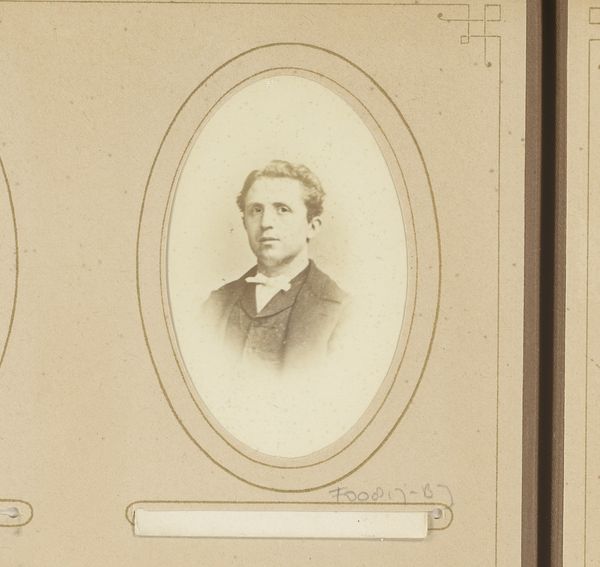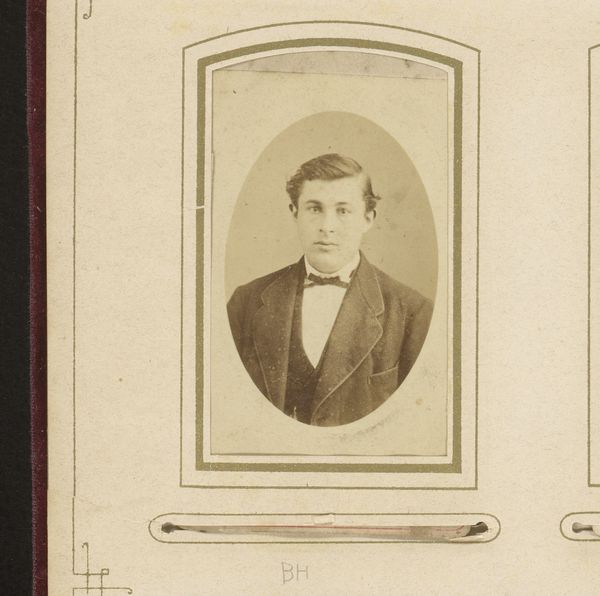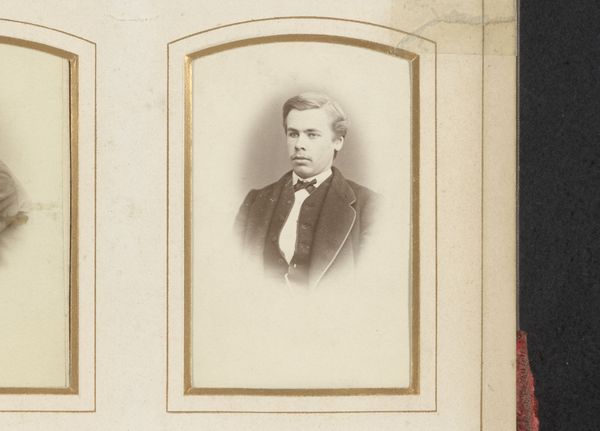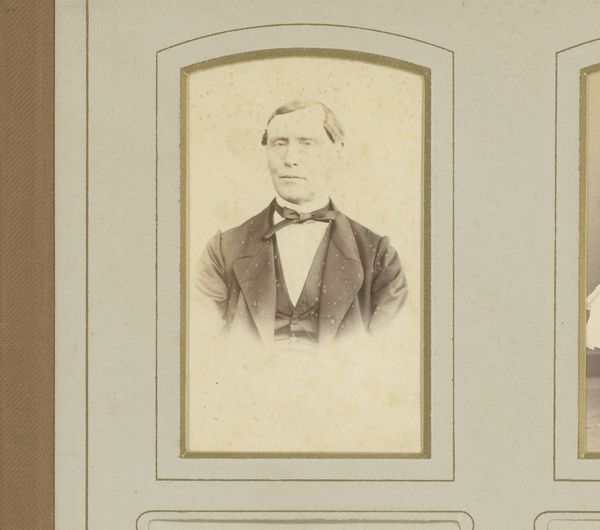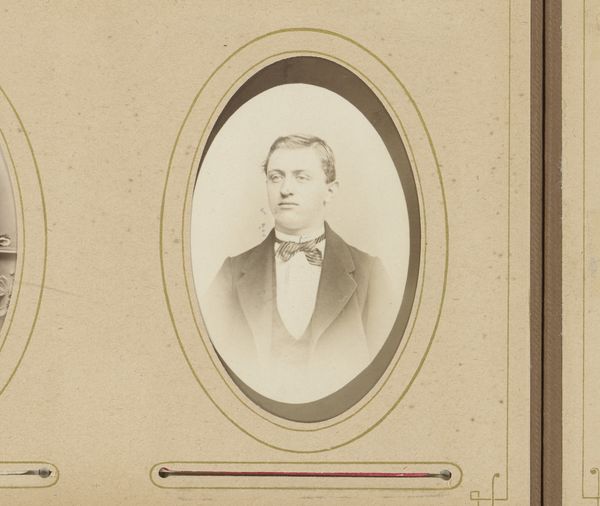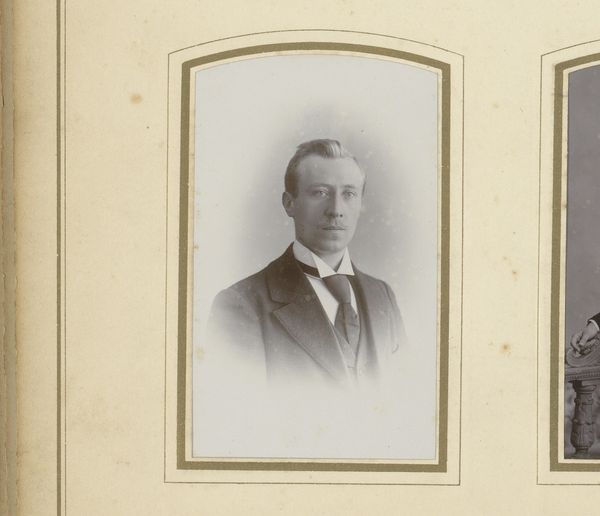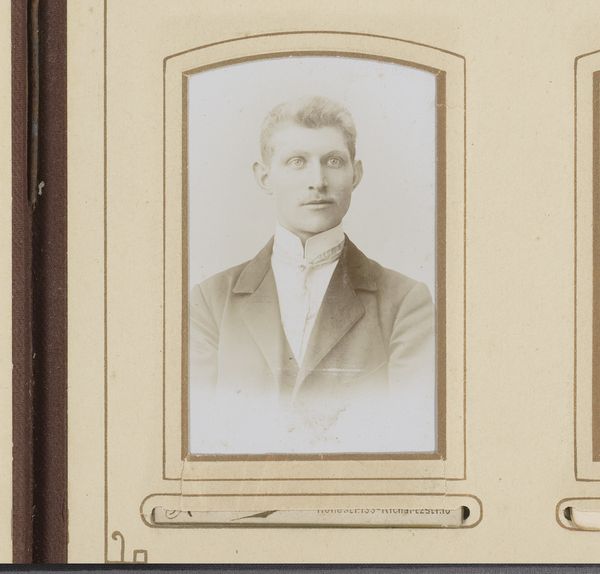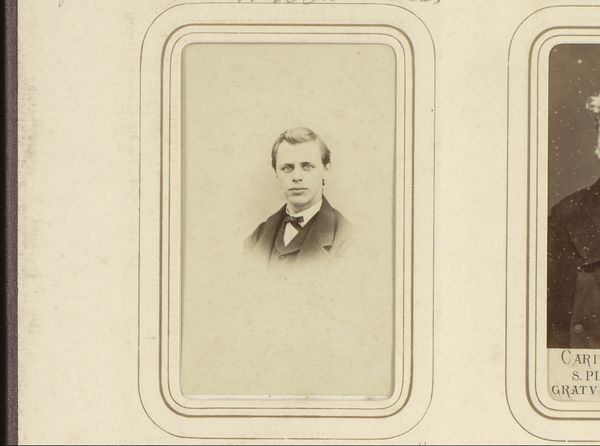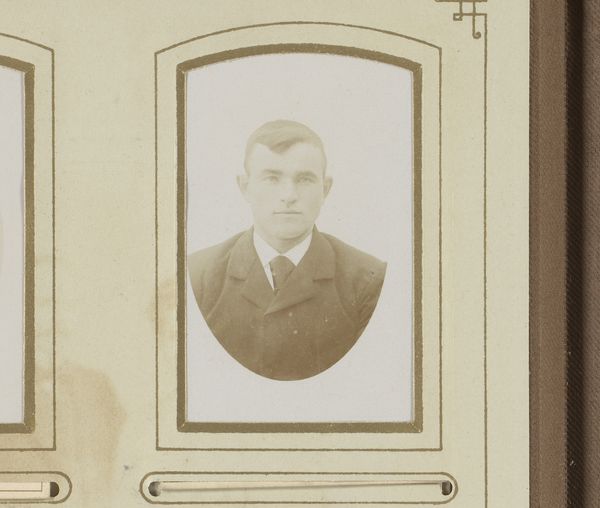
Dimensions: height 83 mm, width 51 mm
Copyright: Rijks Museum: Open Domain
Editor: Here we have "Portrait of a Man," a gelatin silver print dating from the 1860s or early 70s. It’s at the Rijksmuseum, but the artist is Albert Greiner. It strikes me as a very conventional studio portrait from this period; formal attire, restrained pose... What strikes you about this piece? Curator: The fascinating thing is the social context of such portraits. By the mid-19th century, photography became increasingly accessible, offering a novel way for the burgeoning middle class to participate in visual culture. This wasn't just about commemorating likeness, it was about claiming a stake in public representation. Editor: Claiming a stake? How so? Curator: Consider the institutions of the time. Art exhibitions were becoming more common, and photographic societies flourished. To commission and display a portrait like this signaled one’s belonging to a particular social strata. Do you think the rather soft focus, romantic aesthetic was intended to also shape his public image? Editor: Possibly. The romanticism tag does makes sense given that softened appearance, the kind that erases any hint of hardship. Was there a pressure to project a particular kind of image? Curator: Absolutely. Think about the rapid social changes of the industrial revolution. This photograph offers an aspirational, controlled vision of masculinity, reflecting and reinforcing the values of the era: respectability, stability. The photographic framing creates a commodity intended for consumption and dissemination. What do you take away from this discussion? Editor: I hadn't really considered it that way, seeing the photograph as a carefully crafted statement within a broader cultural landscape rather than merely a likeness. Curator: Exactly. It reflects a deliberate negotiation between individual identity and societal expectations, which makes this image historically quite eloquent.
Comments
No comments
Be the first to comment and join the conversation on the ultimate creative platform.
